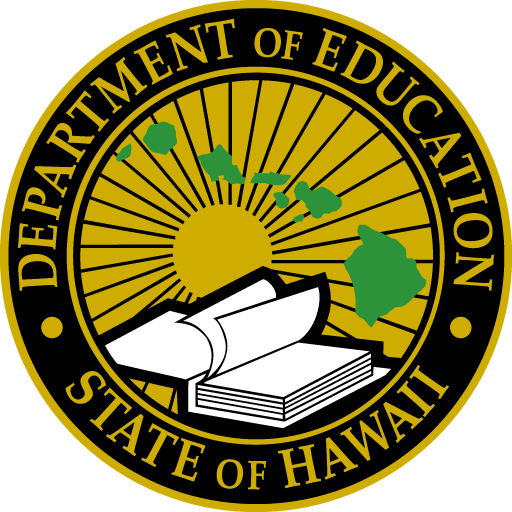Budget and Financial
Weighted Student Formula: The Weighted Student Formula (WSF) is a way to fairly distribute school funds based on each student’s specific needs rather than enrollment. Schools get more resources for students who require extra support, ensuring equal opportunities for all. The funding follows students wherever they go, and WSF helps shape each school’s Academic and Financial Plans. Parents and community members can help in the development of their school’s plan by joining their School Community Council.
Per-Pupil Expenditures: Since 2019 the Department has reported this as part of the federal Every Student Succeeds Act. These reports break down spending into categories: money spent directly at schools, at the complex level, at the state level, and the non-school level portion of spending that is expended on behalf of schools.
- FY 2024 Per-Pupil Expenditures (PDF)
- FY 2023 Per-Pupil Expenditures (PDF)
- FY 2022 Per-Pupil Expenditures (PDF)
- FY 2021 Per-Pupil Expenditures (PDF)
- FY 2020 Per-Pupil Expenditures (PDF)
- FY 2019 Per-Pupil Expenditures (PDF)
- FY 2018 Per-Pupil Expenditures (PDF)
Appropriation Summary Report: The Appropriation Summary Report helps our programs manage their budgets for both the current and future fiscal years. It breaks down the budget into detailed levels below the EDN Program ID level, to include the Department of Budget & Finance (B&F) two-letter Org Code, means of financing (MOF), Office, HIDOE’s 5-digit Program ID, and character of expenditure.
Quarterly Fiscal Reports: Quarterly reports generated each fiscal year for Department expenditures.
Annual Financial and Single Audit Report: The Department’s annual audit is an independent review of its financial statements for the most recent fiscal year. This audit is conducted by a third-party organization and is coordinated by the State of Hawaiʻi’s Office of the Auditor.
Federal COVID-19 Relief Funds: CARES, GEER, ESSER
Compliance
Legislative Reports: Annual reports requested by the Legislature.
Special Education Performance Report: In accordance with the Individuals with Disabilities Education Improvement Act: Part B, and Public Law 108-446, we share our annual Special Education Performance Report. This report evaluates the state’s efforts to implement the requirements of IDEA Part B and outlines plans for making improvements.
1% Threshold Assurance and Justification Forms: We collect assurance forms from all schools and justification forms from schools that exceed the 1% participation threshold for the Hawaiʻi State Assessment-Alternate (HSA-Alt). This process ensures compliance with 34 CFR 200.6(c)(3)(iv), which mandates that schools justify alternate assessment rates above 1.0%. The justification form explains why more than 1% of students are being assessed with the HSA-Alt, while the assurance form confirms that IEP teams are using the state’s criteria to determine eligibility. If you need to see these forms, you can request them by contacting Hawaiʻi State Assessment-Alternate (HSA-Alt).
HIDOE Data Book
Our HIDOE Data Book annual report gives an overview of how Hawaiʻi’s public schools are performing and improving. It covers key academic events, trends and outcomes, including charts and data on student performance, school funding and demographics. For busy readers, there’s an “at a glance” section that highlights the key takeaways. The report also includes a glossary, references and instructions for online access to data tables.
Performance
Strive HI Reports: Statewide and school-level data from our accountability and performance system. Annual reports are produced in the fall.
School Quality Survey: Teachers, students, parents, administrative office staff and instructional support staff give their opinions of school quality in this annual survey.
Summer Learning Dashboard: The summer learning dashboard gives a comprehensive review of summer learning options and supports that were provided including types of summer learning options, meals, personnel hired and expenditures.
Readiness
College & Career Readiness Indicators (CCRI) Reports: CCRI reports are created through a partnership between Hawaiʻi P-20, the Department of Education, and the University of Hawaiʻi. The indicators are chosen based on their impact on improving student readiness for the workforce or post-secondary education.
- Hawaiʻi Data eXchange Partnership (Hawaiʻi DXP): View reports from the cross-agency data arm of Hawaiʻi P-20.
Other
Employment Report: Each year, we provide an Employment Report Summary (SY 2024–25) (PDF) of employment figures and characteristics of newly hired teachers and classified support services personnel for the school year as well as data from prior years.
FAFSA Dashboard: Statewide and high school FAFSA completion progress over time.
Internal Audits: The Internal Audit Office offers independent advice and checks to help improve the Department’s operations and internal control structures. Its primary responsibilities include reviewing the effectiveness of the internal control structure, identifying opportunities for process and control improvements that would mitigate risk exposures, monitoring compliance with laws, regulations, policies and procedures, investigating allegations of fraudulent and/or unethical behavior, and sharing best practices throughout the Department.
School Impact Fees and Fair Share Balances: Funding to offset the student enrollment impacts of residential development.
Use of County Facilities Report: The Department’s Office of Facilities and Operations compiles an annual report to the Governor on monitoring the Department’s use of County properties for public purposes or school functions.

data requests & inquiries
Data Governance and Analysis Branch (DGA)
Phone: 808-784-6061
Email
